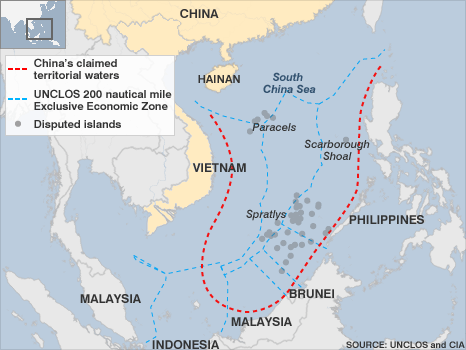Fareed Zakaria is a very reasonable man. In this sense, the contrast between him and the rest of mainstream American punditry is stark indeed. Coming from anyone else, a book with the title The Post-American World could plausibly entail an exercise in sensationalist doomsday forecasts; from Zakaria, we know that such is not the case. Some conservatives and patriots may disagree with the book’s contents, but it is impossible to dismiss as a self-loathing work of anti-nationalism.
Zakaria has the distinct privilege of combining his position of respect and influence within the court of American public opinion with the nuanced perspectives he has gained from his initial outsider status. In 1982, the author was an eighteen year-old Indian student on a flight to the United States, about to embark on a four-year educational journey in a country where he would eventually settle. “The preceding decade had been a rough one in India,” writes Zakaria, “marked by mass protests, riots, secessionist movements, insurgencies, and the suspension of democracy.”
But something has happened since then — in India, in China, and in many other nations as well. Zakaria calls this something “the rise of the rest,” as “countries all over the world have been experiencing rates of economic growth that were once unthinkable.” Unsurprisingly, given the title of his book, Zakaria is not merely interested in this economic phenomenon as a historical anomaly, but also as an indication of America’s rapidly changing role in the new era. In this, our twenty-first century edition of a brave new world, “the distribution of power is shifting, moving away from American dominance. That does not mean we are entering an anti-American world. But we are moving into a post-American world [emphasis in original], one defined and directed from many places and by many people.”
Instead of wallowing in national self-depression, however, Zakaria welcomes this new period. He notes that the American share of global GDP has remained relatively constant for decades; and he elucidates the truths hidden behind the alarmist (and often misunderstood) statistics about American decline. But while Zakaria’s prognostications leave plenty of space for a bright future, his is not a utopian vision unencumbered by hard facts. (One notable exception is his diagnosis of the American economy: “The economic dysfunctions in America today are real, but, by and large, they are not the product of deep inefficiencies within the American economy.” The first edition of his book was printed in April 2008, just months before the economy bottomed out; a later paperback edition included a new preface predicting that “the current economic upheaval will only hasten the move to a post-American world.”) Indeed, Zakaria levels criticisms in a variety of areas, decrying the United States’ “highly dysfunctional politics,” acknowledging that “the American school system is in crisis,” and dubbing the nation an “enfeebled” superpower. In his final chapter, “American Purpose,” Zakaria asks, “How did the United States blow it? [It] has had an extraordinary hand to play in global politics…Yet, by almost any measure…Washington has played this hand badly. America has had a period of unparalleled influence. What does it have to show for it?”
That is a question whose answer will depend on the person, but Zakaria’s prescription for American healing, while hardly groundbreaking, is based in historical precedent: more multilateralism. Contrary to some who argue that idealism is always the refuge of lesser nations while realpolitik is embraced by hegemons, Zakaria points out that the United States “was the dominant power at the end of World War II, when it founded the United Nations, created the Bretton Woods system of international economic cooperation, and launched the world’s key international organizations. America had the world at its feet, but Franklin Delano Roosevelt and Harry Truman chose not to create an American imperium.”
Interestingly, Zakaria’s ideas have found traction in the administration of President Barack Obama. The results are mixed: Obama’s extended hand to Iran was met with a clenched fist and the Palestinian-Israeli conflict has been left largely unaffected, but Obama was able to broker a deal between the heads of the Chinese and French states at the G-20 summit, and the United States and Russia recently finalized a nuclear arms reduction deal. It remains to be seen exactly what will follow from the American presidency’s renewed emphasis on diplomacy, but early returns indicate some potential for positive results. We may live in a post-American world, but if Fareed Zakaria has any say in the theater of global politics, the United States will be far from playing a bit role.







